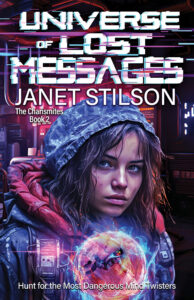I’ve lived a dual existence for most of my adult life, and that’s given me a lot of pleasure. On the one hand, I’m a journalist who chronicles the “adventures” of companies that are in the always-evolving media and entertainment business. On the other, my soul is never happy unless I’m writing fiction.
Swimming in two lanes came out of necessity. I couldn’t count on creative writing to pay the bills. Yet as it turned out, journalism became addictive, especially when I talked with media executives about what they were planning to roll out in the future—new shows, new technology, new ways of attracting advertisers.
Then one day, my two worlds collided in an idea for a novel. The journalism work had “wired” me to imagine what media companies will be like a few decades into the future. How would they influence our thoughts and behaviors even more than they already do? What kinds of executives, or political operatives, would run them? And how will celebrity culture change?
Those questions led me to write to two speculative novels that involve high-stakes struggles between power-hungry leaders and an eclectic band of people who rebel against their incursions. There are also some comedic and romantic threads running throughout. First came my novel The Juice, soon to be followed by a second book, Universe of Lost Messages (now available). While Universe is a sequel, it stands on its own, so you don’t need to read the first book to get into the story.
It’s hardly unusual for writers to travel down both the journalism and creative writing paths. For some, reporting about real-life events has sparked a deep passion for topics that they explore in books. Journalism also hones research and interviewing skills, which are often critical for developing fictional stories. And then there’s that “got to keep the lights on” element.
Here are some books by authors who have also engaged in journalism that I admire:
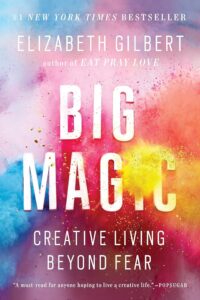
Big Magic: Creative Living Beyond Fear, by Elizabeth Gilbert
While Elizabeth Gilbert’s Eat, Pray, Love deserves all the applause it’s received and she has written many other books, Big Magic is the one I’ve returned to again and again. It explores Gilbert’s journey as a creative writer and the sometimes-inexplicable ways that inspiration can emerge, grow, or flat-out disappear. Magic also provides some advice about how to stay the course when doubts or rejections become dispiriting.
Gilbert is a raconteur par excellence, and the book is filled a lot of entertaining stories about the folks she’s encountered and lessons learned. She touches on experiences that reflect her serious case of wanderlust and curiosity about different types of people. As a journalist, her stories have appeared in Spin, GQ, and The New York Times Magazine.
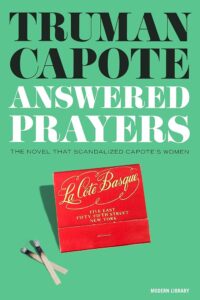
Answered Prayers, Truman Capote
The recent FX series Feud: Capote Vs. the Swans gives readers new reasons to visit (or revisit) Answered Prayers. Truman Capote’s development of the novel is a running storyline throughout the TV show.
The book was published after Capote’s death. But while he was alive, it attracted notice, and notoriety, after he sold four chapters to Esquire—one of which contained thinly veiled characterizations of some of his well-known friends. And it was deeply unflattering. While readers may not agree with his storytelling tactics, Capote’s gifts of observation and sometimes biting wit make Answered an engrossing read.
Answered is billed as fiction, but Capote had previously displayed his gifts as a journalist with the nonfiction book In Cold Blood.
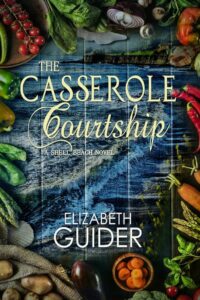
The Casserole Courtship: A Shell Beach Novel, by Elizabeth Guider
Mix together romance, food, and a gorgeous beach and you have the basic recipe for Elizabeth Guider’s The Casserole Courtship: A Shell Beach Novel. But there’s something more to the sauce that makes it unique: her realistic way of describing relationships. That moves this book far, far above the average romance novel.
Casserole takes place shortly after an older man loses his wife. Three women are attracted to him and ply him with various dishes. It’s a bit of a mystery, whom he’ll end up with. As Guider explained in an interview with me, she had a very strong vision of the women’s backgrounds and dreams. And those storylines make the book especially engaging.
Guider is well known in the entertainment industry as a journalist who rose to become a top editor at The Hollywood Reporter and Variety. And that’s how I first came to know her.

American Gods, Neil Gaiman
Neil Gaiman explained why he’s no longer a reporter in a blog post filled with exasperation regarding the way he’s been characterized in the press. But before he honed his creative writing craft and his popularity went off the hook, journalism helped pay the bills.
There’s a lot of Gaiman graphic novels, children’s literature and adult fantasy fiction to choose from. But American Gods is the novel that sparked the most raging fire of delight in my mind.
It tells the tale of a character who seems like a real loser—fresh out of prison, with a cheating wife that turns up dead. He’s sucked into fantasy realm with characters inspired by a wide variety of myths. They lead him into a war within a shadow realm below everyday existence.
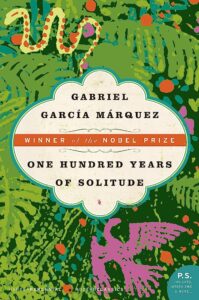
One Hundred Years of Solitude, by Gabriel Garcia Márquez
Before Gabriel Garcia Márquez gained fame as a novelist, he was a journalist, and he worked at that trade in Paris, Bogatá, and New York. Although he wrote many fiction masterpieces whose magic realism style is captivating, One Hundred Years of Solitude (Cien Años de Soledad) is the book I will probably be rereading for the rest of my life.
The novel is densely constructed with strange events and richly envisioned characters who inhabit a town in Márquez’s native country, Colombia, over the course of seven generations. (A dream about a city made of glass? Yeah, he had me right there.) While the book flies high into the realm of fantasy, it is grounded in storylines that relate to Latin American history.
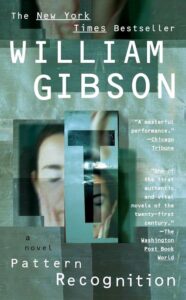
Pattern Recognition, William Gibson
William Gibson famously said, “The future is here. It’s just not evenly distributed yet.” And that certainly springs to my mind when thinking about his novel Pattern Recognition. While it appears to take place in the present, there is also some speculative-fiction storytelling at play.
This first book in Gibson’s three-part “Blue Ant” trilogy has an espionage storyline focused on mysterious film clips that are creating incredible underground buzz. Following the breadcrumb trail is Cayce Pollard, a so-called coolhunter; she has a psychological sensitivity to logos and advertising that allows her to predict hot trends.
About 10 years before Pattern Recognition published (in 2003), Gibson drew a lot of attention with his first major news article, a controversial cover story in Wired: “Disneyland With the Death Penalty.” Singapore reacted by banning Wired from the country.

10% Happier, Dan Harris
In 10% Happier, Dan Harris recounts his exploration of various forms of religion and spirituality, which he reported on extensively for ABC News. The former Good Morning America and Nightline host uses a combination of humor, skepticism, and self-examination throughout the book. Along the way, he relates his experiences in the high-pressure news business, one-time addiction to drugs, and conversations with self-help gurus and disgraced pastors.
Eventually something really clicked for him: meditation. He explains how meditation helped to reset his mind. In the process, he provides readers with an easy way to either explore the practice from scratch or deepen their knowledge of mindfulness practices.
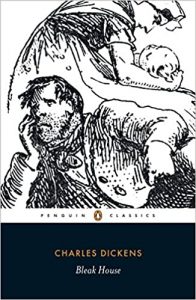
Bleak House, Charles Dickens
When he was a teenager, Charles Dickens began reporting on the law courts of London, and within a couple of years he was contributing to two major publications. Thus began a journalism career that extended through much of his life. While all that was going on, he churned out masterpiece works of fiction that turned him into a literary icon.
Of all the Dickens works I’ve read, Bleak House remains my favorite. On the one hand, it’s a scathing indictment of the British legal system. On the other, it’s populated with extremely endearing and (at times) comical characters—from two young people whose inheritance is evaporating away as an endless legal case drags on, to a philanthropist who is so obsessed with an African tribe that she neglects her own brood of children.
***


